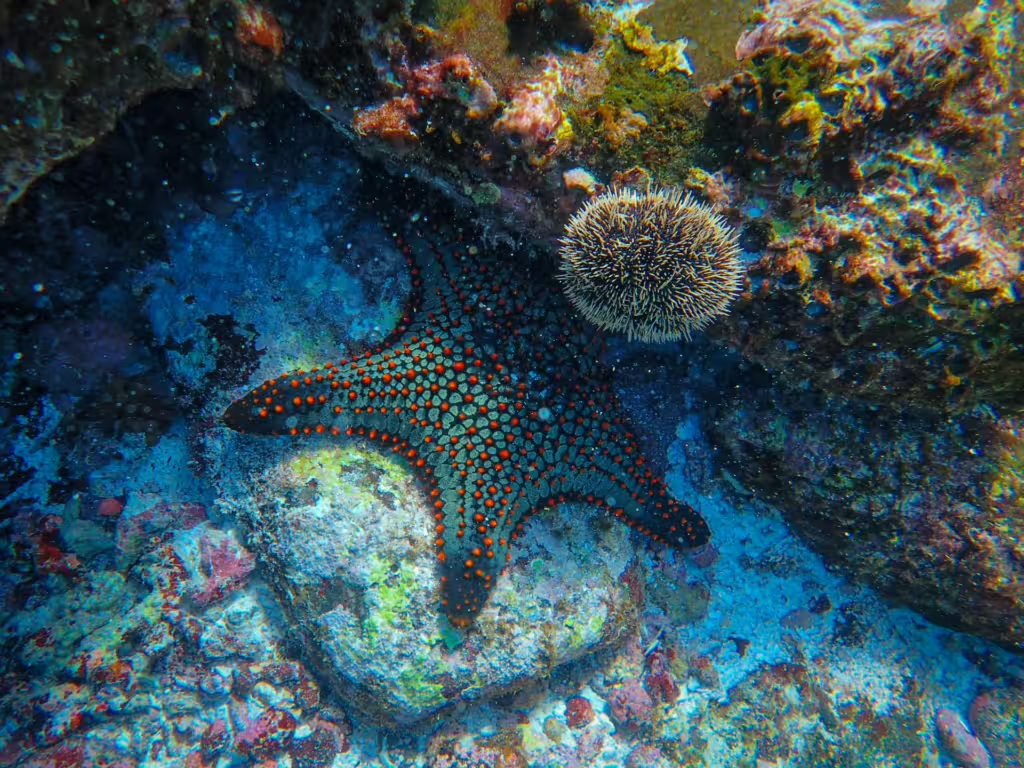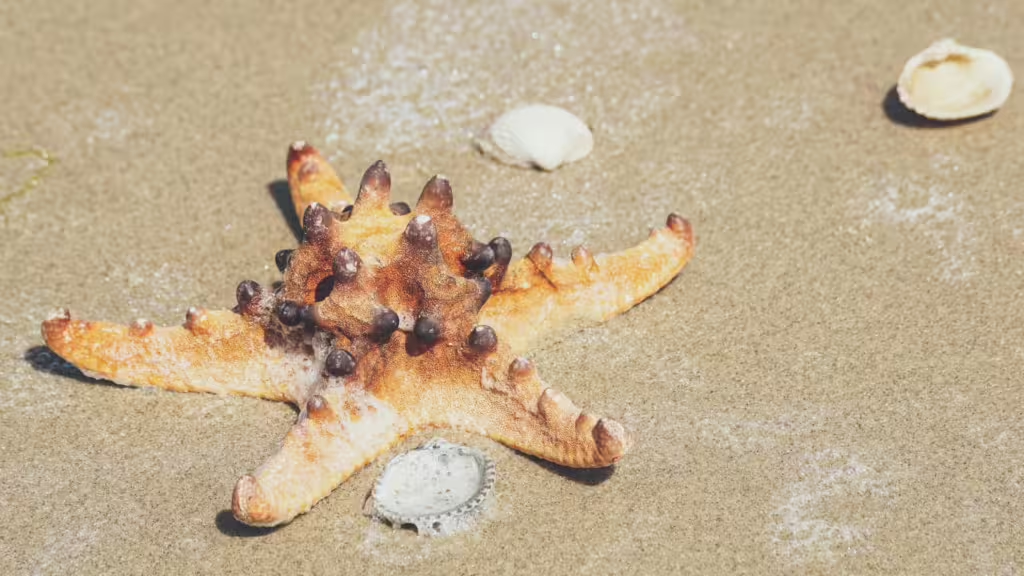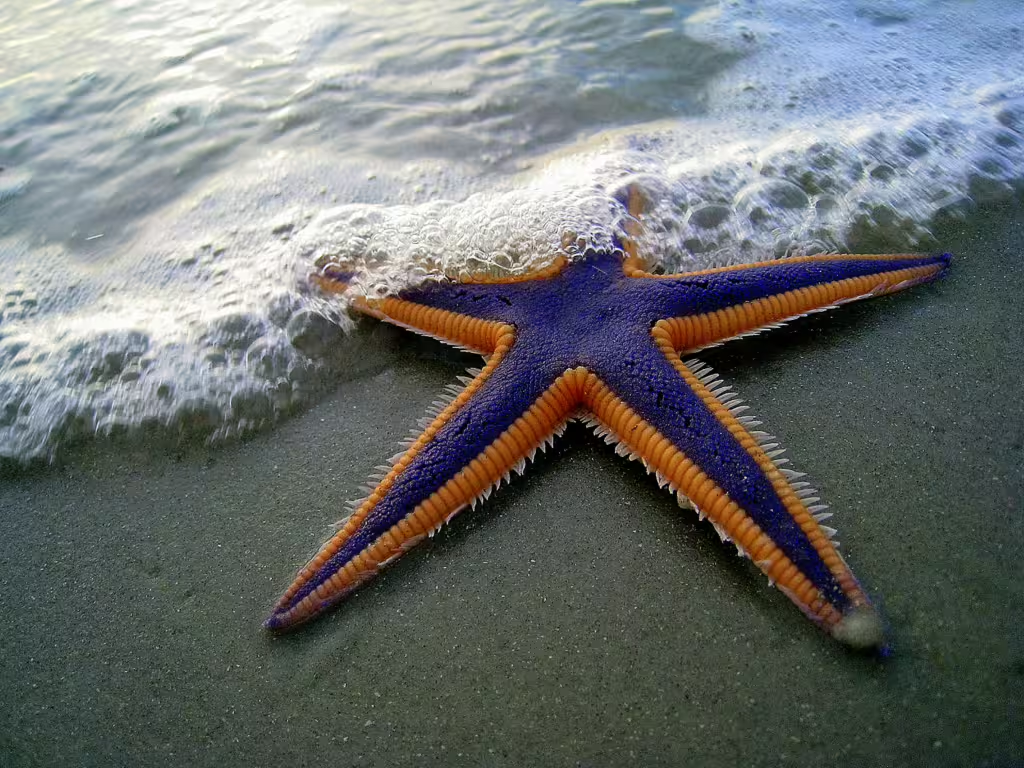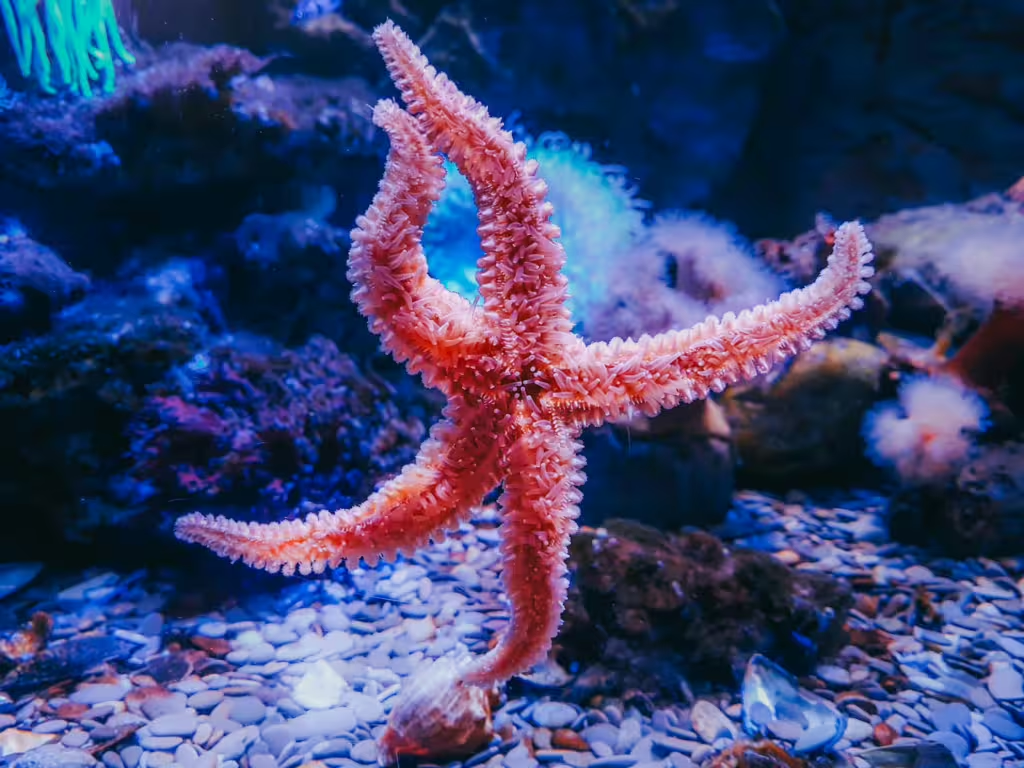A few articles back, we talked about the remarkable, and in some cases, downright unsettling reproductive processes of undersea invertebrates. That got us thinking; the boneless inhabitants that dwell beneath the planet’s oceans are so alien, so unique, and so engrossing, that they bear further investigation. To that end, True Investigator has decided to publish several articles on the most extraterrestrial, Earthlings that share this planet with us. Our first subject; the echinoderms.
For those who don’t know the taxonomy, we’re talking about starfish, here. Most readers will be familiar with the vivid colors and iconic shape of the aforementioned starfish, but we’re willing to bet that many others are not aware of the hidden complexity that lurks beneath this critter’s still and silent existence. Yes, behind the humble starfish’s simple appearance. lies an alien array of abilities and adaptations.
In this article, we will take a deep dive into the undersea world to investigate the simple starfish. We will journey from tropical coral reefs to the icy depths of the polar regions to find out how and why these star0-shaped wonders are so worth investigating. Come with us as we unveil the secret talents, powers, and adaptations of starfish.

What Is a Starfish?
Starfish belong to the phylum Echinodermata, though they are not the only members of this group. Other echinoderms include sea urchins, sea cucumbers, and sand dollars. If you’re sensing a theme here, you are correct. For the most part, this group of invertebrates tend to spend most of their lives being marginally mobile at best. Starfish themselves stand somewhat apart from their stationary step siblings and are part of the class Asteroidea, which contains roughly 2,000 different species.
The name starfish is something of a misnomer, as these critters aren’t actually fish in any capacity. They have no gills, no bones, and a startling anatomy. Most starfish have radial symmetry and are possessed of five arms surrounding a central disk. Some starfish have more than five arms, of course, but it is the disk that’s important here. This symmetry of form allows the starfish to respond to its environment from all directions.
We use the term respond here kind of loosely, as starfish have no central nervous system…no brain, so to speak. They do, however, possess a decentralized nerve net, which allows them to move and respond to stimulus. Starfish have no muscles either, but move via a water-based vascular system. Think of it as hydraulic power, housed in the tube feet of a tiny, harmless sea creature.
Anatomy: More Than Meets the Eye
The starfish has a few main parts to speak of; namely its tube feet, mouth, cardiac stomach, and nerve net. We know, those are a whole lot of scientific terms packed into one sentence, but bear with us. The tube feet allow the starfish to move and climb. They are coated with suction cups on the underside, allowing them to cling to rocks, crawl, and attach to the hard shells of their prey. This ability to move via hydraulic power also allows the starfish to hunt. That’s right, starfish aren’t just souvenirs, they’re undersea predators. The underside of the starfish has their tubes for walking as well as containing all the other bits, including the mouth, which leads to a short esophagus, as well as a fascinating organ known as the cardiac stomach.
Feeding: Stomach-Turning Strategies
As we stated earlier, nearly every species of starfish is carnivorous. Simple as they are, starfish have had to evolve a number of unique ways to feed on their preferred prey; other invertebrates. Their preferred prey is bivalves and they have evolved a unique way to feed on everything from clams and mussels, to barnacles, snails, and coral polyps.
The method starfish use to kill and eat their prey is as brilliant as it is bizarre. It involves the following steps:
Suction grip: Using their tube feet, starfish attach to both sides of a bivalve’s shell and begin to pry.
Slow prying: Starfish are patient (they have no brains after all) and so they tend to pull gradually, often for hours, until the bivalve eventually tires itself and opens slightly. Once it opens even a little, the starfish has its chance.
Stomach eversion: Once it finds an opening, the starfish pushes its cardiac stomach into the tiny gap between the shell of the mollusk and the meat.
External digestion: While it’s inside, the starfish’s now external stomach secretes digestive enzymes to break down the prey. When all is said and done, the starfish pulls back its stomach, retracting the liquefied nutrients and digesting them fully within its own biology.

Regeneration: Nature’s Rebuilders
Did you know that starfish can regenerate? That’s right, starfish loses one or more arms—let’s say due to predation, injury, or environmental stress—the echinoderm can regrow them over time. Some species of starfish will even tear off a piece of themselves if they fear their whole body is in danger of being eaten.
Reproduction: Sexual and Asexual Strategies
The so-called gory details about how starfish reproduce aren’t really all that juicy, to be honest. This is mostly due to the fact that they can reproduce both sexually and asexually. How they do it all depends on the species in question and the environmental cues that instinctually lead them to reproduce.
We should be clear, starfish are not intrinsically hermaphroditic. They are in fact, dioecious, meaning they have separate male and female individuals. When they spawn, both sexes release their gamets into the water column and fertilization occurs outside of their bodies. In time, the fertilized eggs develop into free-swimming larvae, or starvae, as we like to call them. These teensy babies float off into the sea for weeks, before landing on the seafloor to metamorphose into juvenile starfish.
That said, some species, especially in more stable environments, rely on asexual reproduction, to create the next generation. In these cases, starfish will reproduce via fission or by regenerating new starfish from fragments of one individual. There are even species, such as the cushion star, which can reproduce both ways!
Defensive Adaptations
Some of you may be wondering, how the heck does a starfish protect itself from other predators? The answer is just like the starfish themselves, complicated. First off, starfish have few predators but they are also far from defenseless. Many starfish have tough, spiny skin or plates that deter predators from trying to take a bite out of them. If they do manage to get a bite, most starfish can recover and regenerate the lost chunk.
In addition, some species are able to produce toxins or other unpalatable chemicals in their flesh that make them rather less than tasty to most other animals. The crown of thorns starfish is aptly named and a good example of both toxin and armored appearance. These impressive echinoderms are covered in venomous spikes that can even harm human beings.
Finally, there is the starfish’s camouflage, some of them might be very bright when seen on their own, but beneath the waves and attached to rocks and colorful coral, they blend in perfectly. Some starfish are even sand or stone-colored to match their surroundings.
Environmental Challenges
Starfish are as vulnerable to environmental stressors as most marine species. In fact, their specialized behaviors and bodies make them even more sensitive to minute alterations within their biome. Ocean acidification and climate change are already affecting CO2 levels in waters across the planet. This, in turn, affects the availability of calcium carbonate, which echinoderms like starfish use to build their skeletons. The result of all this has been a downtick in reproductive rates for many starfish populations. Warmer waters caused by climate change also affect the starfish larval stage and can alter reproductive cycles for species that rely on specific environmental cues to begin the process.
Habitat destruction is similarly problematic. Coral reef degradation, overfishing, trawling, and coastal development decimate starfish habitats and affect the availability of their prey. Water pollution is another problem altogether and is potentially linked to disease known as Sea Stat Wasting Syndrome. This condition causes starfish to lose limbs, develop lesions, and eventually waste away; that is to say, disintegrate from the inside out. Sea Star Wasting Syndrome has caused massive die-offs among many species since it first emerged in 2013 and it shows no sign of slowing down.

True Investigator Says…
As you can see, starfish might seem like they are still and simple, but they are far more complex, inside and out, than most terrestrial creatures. The echinoderm’s remarkable traits of regeneration, external digestion, hydraulic movement, and decentralized intelligence make them more alien than terrestrial; and that is truly incredible. Moreover, these uncomplicated critters play a vital roles in several marine ecosystems, thus ensuring the continued survival of countless other species. So, the next time you see a starfish dried up in a seaside shop of beach-centric tchotchkes, try and have a little respect for what that poor petrified creature was once capable of.
Discover more from TrueInvestigator
Subscribe to get the latest posts sent to your email.


